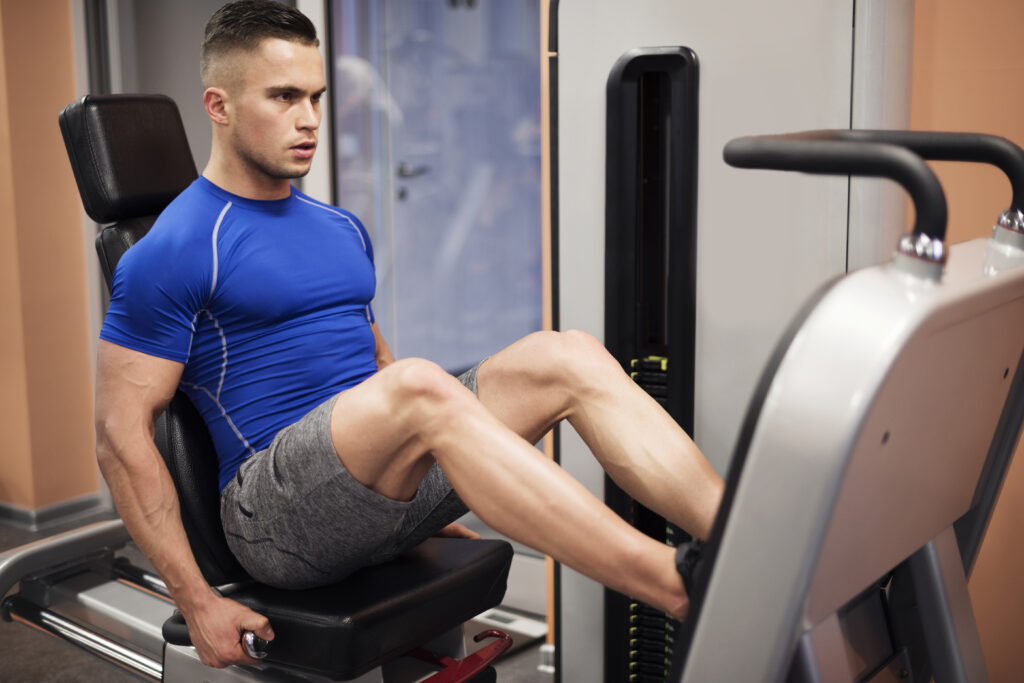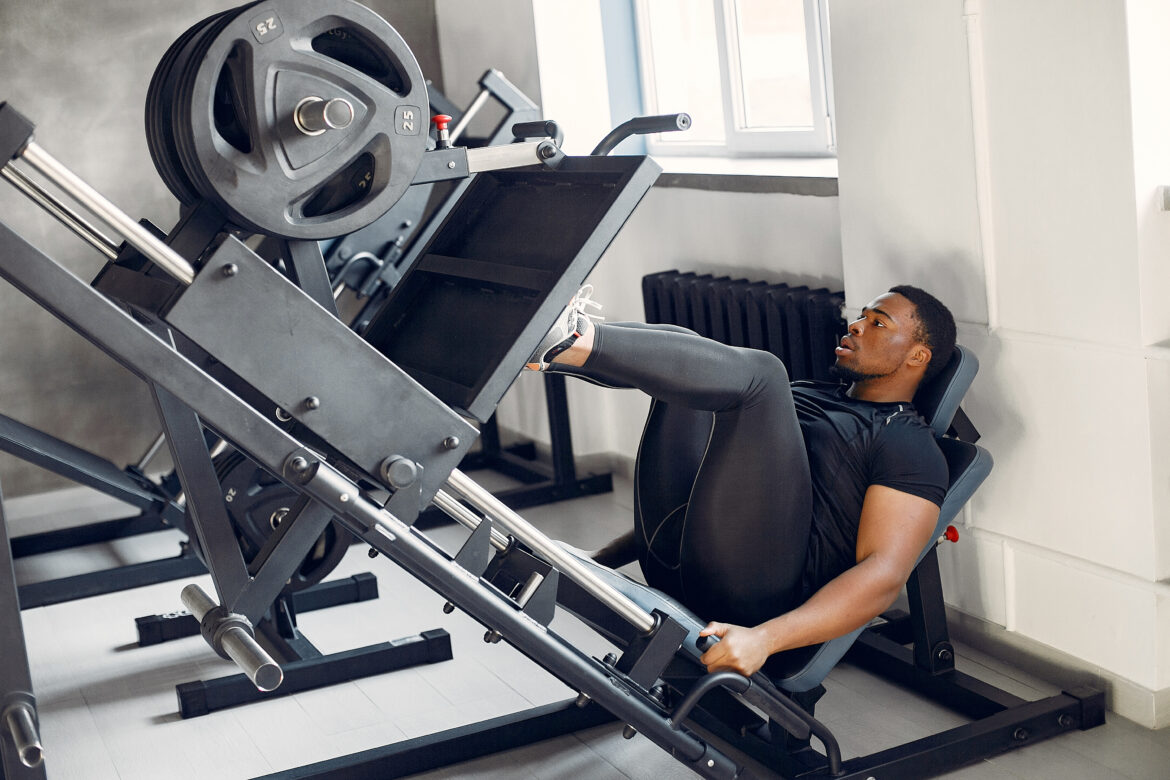When it comes to isolating and strengthening the front of your thighs, the leg extension machine is a gym staple. But for years, it’s been treated like the black sheep of lower-body workouts. You’ve probably heard that it’s bad for your knees or not functional enough. But here’s the truth—it’s not the machine that’s the problem. It’s how we use it.
Used correctly, the leg extension machine can help you build stronger, more stable quads without damaging your knees. In fact, for many people recovering from injuries or wanting to improve leg symmetry, this machine is a gift. Let’s dive into how you can unlock its benefits safely and effectively.
Why the Leg Extension Machine Is Misunderstood
The leg extension machine often gets blamed for causing knee pain. But this oversimplifies the issue. The machine isn’t inherently harmful—it’s just easy to misuse.
Many gym-goers jump onto the machine, stack on too much weight, and start cranking out reps with poor form. This can put strain on the knee joint, especially if the pad is poorly positioned or if the movement is rushed and jerky.
In reality, the leg extension machine is one of the few tools that can isolate the quadriceps muscles with precision. When used properly, it can help you build strength in a controlled, targeted way that’s hard to replicate with compound lifts alone.
The Muscle Mechanics — What You’re Actually Working
Your quadriceps are made up of four muscles, and the leg extension machine targets them directly. While squats and lunges also work the quads, they involve multiple muscles and joints. That’s what makes leg extensions unique—they allow you to focus entirely on the quads.
Stronger quads don’t just mean bigger legs—they also contribute to better knee tracking and improved performance in sports, running, and even walking. Weak quads are often linked to knee instability, so building them up in a controlled way can actually protect your joints over time.
5 Safe and Effective Ways to Use the Leg Extension Machine
Let’s break down five practical ways you can use the leg extension machine to build muscle while keeping your knees safe.
1. Adjust the Pad to Match Your Ankle, Not Your Ego
One of the most common mistakes on the leg extension machine is setting the ankle pad too high or too low. The pad should sit comfortably just above your ankle, not on your shin or foot. This positioning helps distribute the load properly and reduces unnecessary tension on the knee joint.
It’s not about what looks cool—it’s about what protects your body. Taking a few seconds to adjust the machine can make all the difference.
2. Choose Lighter Weights with Higher Control
Many people overload the leg extension machine in hopes of quick gains. But your knees aren’t designed to handle sudden, heavy loads in this movement. Instead, start with a lighter weight and focus on slow, controlled reps.
Control is where the real strength is built. Lifting lighter but with strict form trains the quads more deeply and allows your connective tissues to adapt gradually.
3. Use a Slow, Controlled Tempo
The pace at which you perform each rep matters just as much as the weight you use. A slow tempo—think 2 seconds up, 2 seconds down—keeps tension on the quads throughout the movement.
Fast reps often involve momentum, which transfers stress to the joints. Slower reps force your muscles to do the work, and that’s where the growth and protection come from.
4. Don’t Lock Out at the Top
At the top of the movement, it might feel tempting to extend your legs fully and snap them straight. But locking out can place stress directly on the knee joint, especially when you’re fatigued.
Instead, stop just short of full extension—about 90–95%. This keeps constant tension on the quads and avoids that risky pressure on the knee cap.
5. Start Your Range of Motion Where It Feels Comfortable
You don’t have to lower the pad all the way back if it feels uncomfortable. Start within a range that feels strong and controlled. Over time, you can increase your range of motion as your flexibility and strength improve.
Customization is key. Listen to your body instead of forcing textbook angles that don’t work for your structure.

Common Mistakes That Hurt Your Knees
Despite being simple in design, the leg extension machine is often misused. Common errors include:
- Using momentum to lift the weight
- Locking out the knees at the top
- Placing the pad too high or too low
- Rushing through reps
- Not aligning the knee joint with the pivot point of the machine
Correcting these habits can transform this misunderstood tool into a safe and powerful part of your leg routine.
Tips to Pair With Leg Extensions for Better Knee Health
While the leg extension machine is great for quad isolation, it should be part of a balanced program.
Pair it with compound movements like goblet squats, step-ups, or split squats to train your legs in a more functional way. Also, don’t forget your hamstrings—strong quads need equally strong hamstrings for joint balance.
Foam rolling, mobility work, and stretching after training help keep your muscles supple and reduce stiffness around the knee area.
Who Should Avoid the Leg Extension Machine?
Despite its benefits, the leg extension machine isn’t for everyone. If you’re recovering from knee surgery, have significant joint instability, or suffer from chronic patellar pain, it’s best to consult a physiotherapist before including this exercise.
There are gentler options like wall sits, resistance band extensions, or terminal knee extensions (TKEs) that might be better suited for sensitive knees.
Is the Leg Extension Machine Safe for Beginners?
Here’s what new gym-goers often wonder
If you’re new to strength training, it’s normal to feel unsure about using the leg extension machine. After all, it looks like it puts a lot of pressure on your knees. The truth? Yes, it can be safe for beginners — if used with proper form and light weight. Start slow, adjust the machine to your leg length, and don’t lock your knees at the top of the movement. Keep your reps controlled.
Which Muscles Does the Leg Extension Machine Target?
The answer is simple, but important
The leg extension machine is all about isolating the quadriceps — the large muscles on the front of your thigh. It doesn’t hit your hamstrings or glutes much. If your goal is to tone or strengthen the front of your legs specifically, this machine does the job. It’s one of the few exercises that works the quads in complete isolation.
Can the Leg Extension Machine Harm My Knees?
This is probably the most common concern
It’s true — the leg extension machine has a reputation for putting strain on the knees. And honestly, that’s not completely wrong. But here’s the catch: it only becomes dangerous if you use too much weight, go too fast, or extend beyond your natural range of motion. For healthy knees and smart form, keep the weight moderate and the reps smooth. Listen to your body.
How Can I Build Muscle Mass Using This Machine?
Want stronger legs? Here’s what matters
To build real leg muscle using the leg extension machine, you need progressive overload. That means gradually increasing the weight over time. Combine that with 8–12 reps per set, done with proper control. For hypertrophy (muscle growth), focus on slow negatives (lowering phase) and really squeeze your quads at the top of the movement.
How Many Sets and Reps Should I Do for Results?
Results depend on more than just showing up
If your goal is endurance or toning, aim for 15–20 reps with lighter weight. If you’re chasing size and strength, stick to 3–4 sets of 8–12 reps with slightly heavier resistance. But remember, form comes first. It’s better to do 10 clean reps than 20 shaky ones.
Should I Include the Leg Extension Machine in My Routine Regularly?
Here’s the real-world approach
You don’t need to use it every day. Once or twice a week is enough, especially if you’re already doing squats, lunges, or step-ups. It works great as a finisher at the end of a leg workout when your quads are already warmed up. Think of it as a focused tool, not the entire toolbox.
Is It Better Than Squats or Lunges?
Let’s compare, human to human
Not really better — just different. Squats and lunges hit multiple muscles, including glutes, hamstrings, and core. The leg extension machine is more isolated, so it’s great if you want to sharpen quad strength or recover from injury. Ideally, use both in your routine for complete leg development.
How Do I Know If I’m Using It Correctly?
Quick tips that make a big difference
- Adjust the pad just above your ankles
- Keep your back flat against the seat
- Don’t jerk or swing the weights
- Never lock your knees at the top
- Use a full range of motion but stay pain-free
If you feel tension in your knees more than your thighs, stop and reassess your form.
What If I Have Knee Problems Already?
Be cautious, not scared
If you have existing knee issues, consult a physical therapist or doctor first. They might recommend limited range of motion or alternative exercises. In some rehab settings, the leg extension machine is even used under supervision. But never push through pain.
Is It Okay to Skip This Machine Altogether?
No rule says you have to use it
Plenty of people skip the leg extension machine and still build strong legs. If you prefer compound movements or functional training, that’s fine. This machine is a helpful tool — not a must.
Final Thoughts — It’s Not the Machine, It’s the Method
The leg extension machine doesn’t deserve the bad reputation it often gets. When used with intention, it’s a precise tool for strengthening one of the most important muscles in your body—the quadriceps.
The secret lies in proper setup, slow tempo, and listening to your body. Ditch the ego, dial in your form, and you’ll discover a whole new respect for this classic machine.
Whether you’re recovering from an injury, looking to break through a plateau, or simply want to train smarter, the leg extension machine has a place in your workout—if you treat it with care.
FAQs
Is the leg extension machine bad for knees?
Not if you use it correctly. Poor form and overloading are the real culprits behind knee pain.
What’s the right weight to start with on the leg extension machine?
Begin with a weight you can lift for 12–15 reps with full control and zero discomfort. Progress gradually.
How often should I use the leg extension machine?
1–2 times per week is enough for most people. It’s best used as an accessory movement.
Can beginners use the leg extension machine safely?
Yes, with proper form and light weights. It’s a good way to learn quad activation.
Should I lock out my knees at the top of the rep?
No. Stop just short of full extension to protect your knee joint and keep tension on the muscles.
